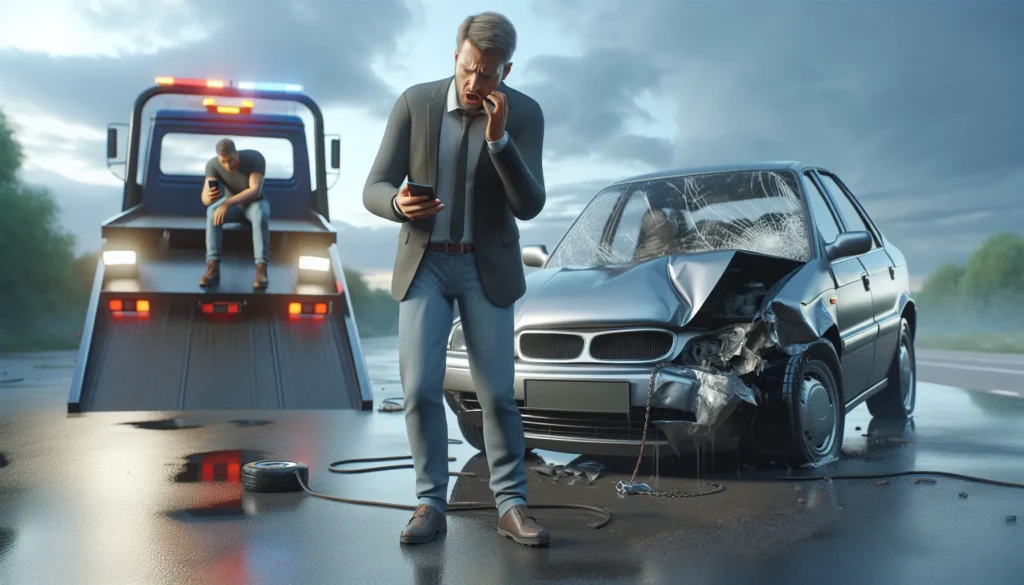Key Takeaways
- Gap Insurance Definition: Gap insurance covers the difference between your car’s actual cash value (ACV) and the remaining balance on your loan or lease in cases of total loss or theft.
- Who Benefits Most: New car buyers, leaseholders, or those with long loan terms or small down payments benefit the most, as these situations often lead to a “gap” due to depreciation.
- Key Coverage Details: It only applies to total loss or theft scenarios and excludes overdue payments, late fees, or negative equity from trade-ins.
- Where to Get It: Gap insurance can be purchased through auto insurance providers or dealerships, but comparing costs ensures you get the best rate.
- Common Misconceptions: Gap insurance is not a full coverage policy and is typically unnecessary for older vehicles, cars paid in full, or loans nearing payoff.
- Financial Protection: It offers peace of mind, protecting you from out-of-pocket expenses if your car’s value drops below what you owe during a claim.
Buying a car is exciting, but figuring out all the insurance options can feel overwhelming. One term that often pops up is “gap insurance.” If you’re like me, you might’ve wondered if it’s just another unnecessary add-on or something you actually need.
Gap insurance isn’t as complicated as it sounds, and it could save you from a major financial headache. It comes into play when your car’s value and what you owe on it don’t quite line up. Whether you’re leasing, financing, or just curious, understanding gap insurance can help you make smarter decisions about your coverage.
What Is Gap Insurance?
Gap insurance, or Guaranteed Asset Protection insurance, covers the difference between a car’s actual cash value (ACV) and the remaining balance on a car loan or lease in cases of total loss or theft. If an accident results in your vehicle being deemed a total loss, standard auto insurance typically only reimburses the ACV, which might be less than what you owe.
This type of insurance is especially helpful for leased vehicles or financed cars where depreciation happens quickly. For instance, if the ACV of a new car drops to $20,000 after purchase but $25,000 is still owed on the loan, gap insurance would cover the $5,000 difference.
Some dealerships, lenders, or insurers offer gap insurance as an additional policy option. Coverage terms can vary, so it’s essential to check eligibility and limits before choosing a plan.
How Gap Insurance Works

Gap insurance fills the financial gap if your car is declared a total loss or stolen, and your loan or lease balance exceeds the vehicle’s actual cash value (ACV). It ensures you’re not left paying out-of-pocket for the remaining balance after a claim.
Understanding the Coverage
Gap insurance only applies to the difference between your car’s ACV and the balance on your loan or lease. Insurers base the ACV on the vehicle’s market value at the time of the claim. For example, if your car’s ACV is $18,000 but you owe $22,000 on the loan, gap insurance covers the $4,000 difference. However, it doesn’t pay for overdue loan payments, late fees, or negative equity from a previous car loan.
When Gap Insurance Is Applied
Gap insurance is used when a vehicle is declared a total loss due to theft or severe damage that’s not repairable. If you have comprehensive or collision coverage, your insurer pays the ACV first, and gap insurance covers any remaining loan or lease balance. For instance, if your car is stolen and the ACV payout doesn’t cover your loan balance, gap insurance activates to make up the shortfall.
Benefits Of Gap Insurance

Gap insurance offers valuable advantages for those financing or leasing vehicles. It helps protect your financial stability and provides reassurance in worst-case scenarios.
Financial Protection
This insurance covers the financial shortfall if your car’s actual cash value is less than the loan or lease balance after a total loss or theft. Without it, I’d face paying out-of-pocket to bridge that gap. For example, if the insurer values my car at $18,000 but I owe $22,000 on the loan, gap insurance would cover the $4,000 difference. It ensures I avoid unexpected loss or debt that could strain my budget.
Peace Of Mind For Car Owners
Knowing gap insurance safeguards against financial burdens lets me focus on safety instead of potential monetary loss. I don’t worry about being stuck with unpaid loan balances when accidents or thefts occur. It’s especially useful for new cars that depreciate quickly, where the risk of owing more than the car’s value is higher in the initial years.
Who Should Consider Gap Insurance?

Gap insurance is an ideal option for individuals facing specific financial risks with their vehicles. It provides protection in particular scenarios, ensuring you’re not left with high out-of-pocket expenses.
New Car Owners
People buying new cars often benefit from gap insurance. New vehicles experience rapid depreciation, losing up to 20% of their value within the first year. If something happens to the car during this time and its actual cash value (ACV) is lower than the loan amount, gap insurance covers the difference. For instance, if you owe $30,000 on a car worth $25,000, gap insurance pays the $5,000 shortfall.
Lease And Loan Holders
Leased or highly-financed vehicles often make gap insurance essential. Leasing agreements typically require full coverage, and depreciation can create a gap between the lease balance and ACV. If you’re financing a car with a small down payment or long loan term, the remaining balance may exceed the car’s value during the early years. This coverage ensures you don’t owe thousands if the vehicle is totaled or stolen.
How To Get Gap Insurance
Gap insurance is available through several channels. Whether purchasing it from an insurance provider or a car dealership, it’s essential to compare options to find the best coverage.
Through Your Auto Insurance Provider
I can add gap insurance when buying or updating a standard auto insurance policy. Many providers offer this as an optional add-on or as part of a comprehensive package. I check with my existing insurer to see if they offer gap insurance before exploring new providers. If offered, I carefully review the terms, costs, and exclusions to ensure it meets my needs.
Providers may limit eligibility based on the car’s age, loan terms, or financing conditions. For example, insurers often exclude vehicles over a specific age or those with older loans. I confirm these specifics upfront to avoid surprises.
Through Your Car Dealership
I can also purchase gap insurance directly from my car dealership when financing or leasing a vehicle. Dealerships frequently add this coverage to loan agreements, making it convenient during the buying process. I request a breakdown of costs and ask if it’s included in “add-on” packages.
While dealership gap insurance provides ease, it may cost more than policies from insurers. For example, I may pay higher premiums if the cost is rolled into my monthly loan payment. Comparing rates with insurance providers helps me identify the most cost-effective option.
Common Misconceptions About Gap Insurance
Many individuals misunderstand gap insurance, leading to confusion about its purpose and coverage. I’ll address some of the most common misconceptions below.
Coverage Limitations
Gap insurance only covers the difference between your car’s actual cash value (ACV) and the loan or lease balance in cases of total loss or theft. It doesn’t pay for routine damages, overdue loan payments, or negative equity from trade-ins. For example, if you owe late fees or penalties on your car loan, these won’t be included in the gap insurance payout. Some mistakenly believe gap insurance acts as full-coverage auto insurance, but that’s incorrect—it’s a supplemental type of coverage.
Misunderstood Eligibility
Not everyone qualifies for gap insurance, as eligibility depends on factors like the loan type and vehicle value. It’s common to assume that all financed cars need gap insurance, but older vehicles or those close to loan payoff usually don’t benefit from it. For example, if your car’s ACV is equal to or exceeds the remaining loan balance, there’s no “gap” for the insurance to cover. Additionally, gap insurance is typically unnecessary for cars purchased outright without financing.
Conclusion
Gap insurance might not be the first thing that comes to mind when buying or leasing a car, but it can make a big difference when it comes to protecting your finances. It’s one of those things you hope you never need, but you’ll be glad to have if the unexpected happens. Taking the time to understand your options and whether gap insurance fits your situation can save you from unnecessary stress and financial strain down the road.
Frequently Asked Questions
What is gap insurance?
Gap insurance, or Guaranteed Asset Protection insurance, covers the difference between a car’s actual cash value (ACV) and the remaining loan or lease balance if the car is totaled or stolen. It ensures you are not left paying out-of-pocket for the shortfall.
Who needs gap insurance?
Gap insurance is ideal for new car owners, leased vehicles, or highly-financed cars. It’s especially important for vehicles that depreciate quickly, as it protects against financial losses if the car’s value is less than the loan or lease balance.
Does gap insurance cover all damages?
No, gap insurance only covers the unpaid balance between a car’s ACV and the loan or lease amount in cases of total loss or theft. It does not cover routine damages, overdue payments, or negative equity from previous loans.
How does gap insurance prevent financial loss?
If a car is totaled or stolen, the insurer pays the ACV first. Gap insurance then covers the difference between the ACV and the remaining loan or lease balance, preventing out-of-pocket expenses for the shortfall.
Can I get gap insurance from my auto insurer?
Yes, many auto insurance providers offer gap insurance as an add-on to standard policies. Check with your insurer about availability, terms, and costs to see if this option fits your needs.
Is gap insurance available through dealerships?
Yes, dealerships often offer gap insurance when financing or leasing a car. While convenient, it may be more expensive than purchasing it from an insurance provider. Comparing costs can help you save money.
Does gap insurance cover overdue loan payments?
No, gap insurance does not cover overdue payments, late fees, or penalties. It only covers the financial gap between the car’s ACV and the remaining loan or lease balance.
Should I get gap insurance for an older car?
Gap insurance is typically unnecessary for older vehicles or cars close to loan payoff, as the gap between the loan balance and the car’s value is often minimal. It’s most beneficial for newer, rapidly depreciating cars.
Is gap insurance mandatory for leasing a car?
Some leasing agreements require gap insurance, as leased vehicles depreciate quickly. It’s essential to check the lease terms to determine whether gap insurance is included or mandatory.
How much does gap insurance cost?
The cost of gap insurance varies depending on the provider, policy terms, and car value. On average, it costs $20–$40 annually as an add-on to your auto insurance or a one-time fee of $500–$700 through a dealership.
